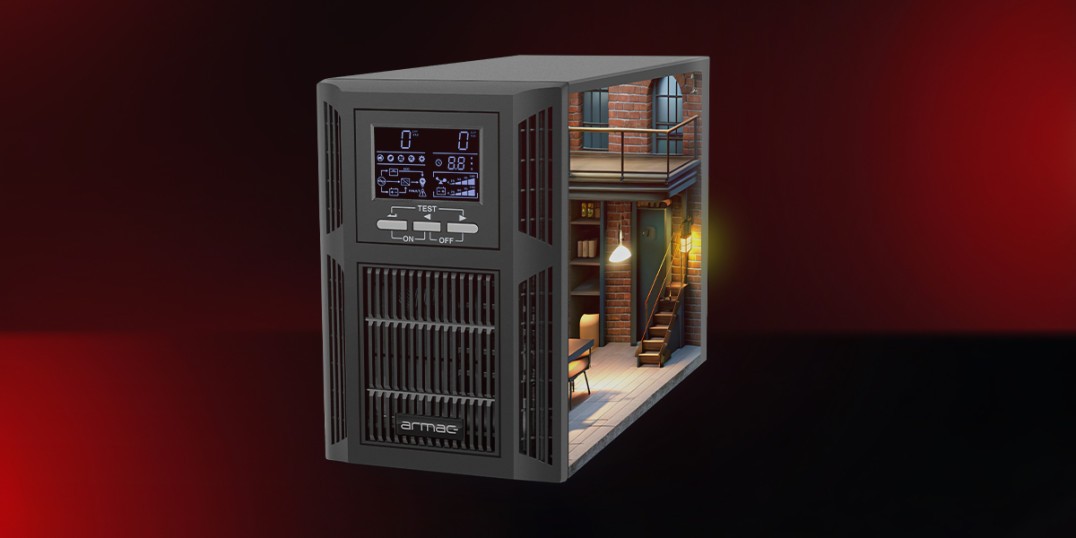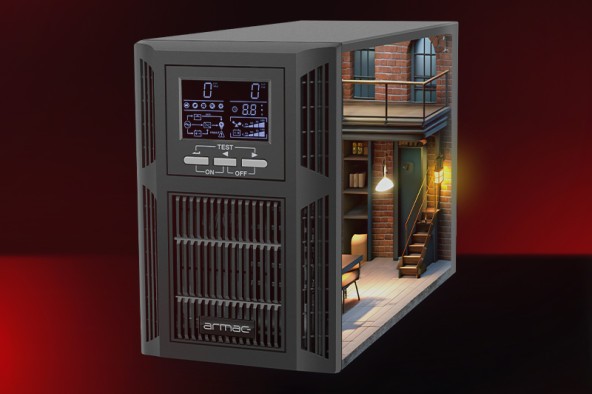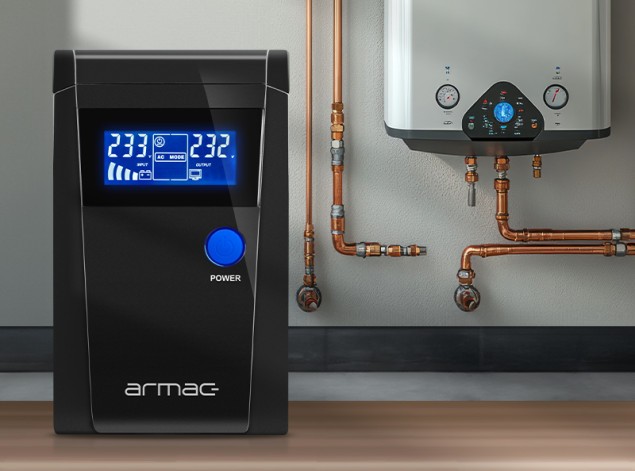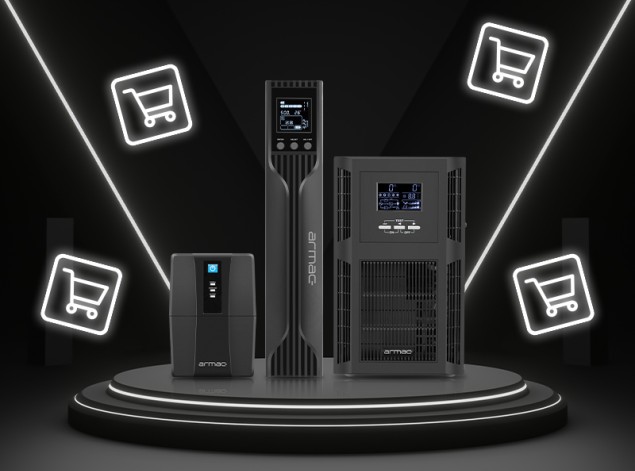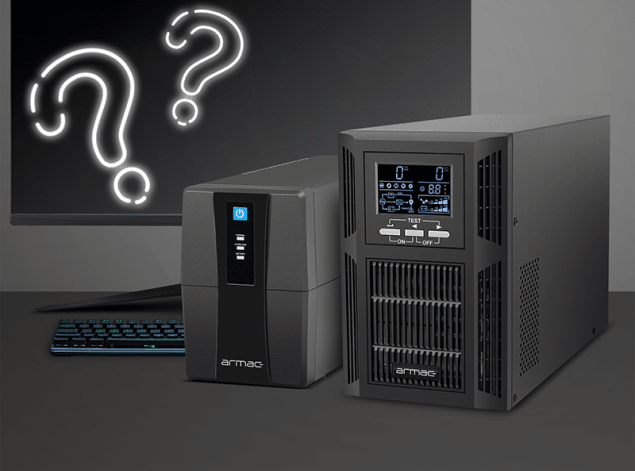Nowadays, electricity is a basic part of everyday life – it powers virtually every household and many key appliances that are essential for our survival in the long term. Unfortunately, the power supply can be jeopardized for a long time by a blackout, i.e. a widespread power outage affecting a larger area. In the following article, you will learn how to prepare for a blackout, how to survive it without major losses, and which emergency power sources (including UPS by Armac) can help when the power goes out.
What is a blackout and what are its causes?
What exactly is a blackout?
In short, a blackout occurs when the voltage in the grid drops to zero or to a dangerously low level. This results in a total power outage in many places at the same time. A blackout in Poland is a real threat because power outages can occur both due to overloads in the power system and for extraordinary reasons (e.g. a missile attack, sabotage of infrastructure or a powerful solar flare).
What are the most common causes of power outages?
The most typical failure is an overload or damage to a power plant, but extreme weather events (hurricanes, snowstorms), damage following armed conflict or even global fluctuations in the power grid are also possible. It is worth remembering that the intensive use of renewable energy sources without adequate support can also introduce instability. We also experience power outages due to damage to transmission lines or human error. Each such failure can cause long-term power outages over large areas.
Which areas are most at risk of blackouts?
Areas with weaker infrastructure or places with a high demand for electricity in a short period of time are usually more at risk. Traffic lights, mobile phone networks and hospital systems are particularly affected when there is a power outage. A power outage in key institutions has a negative impact on public safety and can paralyze everyday life. Large urban centers are usually better protected against the effects of such an emergency than small towns and rural areas. Thanks to the presence of emergency systems and generally good crisis infrastructure, city dwellers can count on the rapid and efficient implementation of appropriate scenarios. On the other hand, more critical systems in cities depend on electricity, so if there is a power outage, infrastructure, services and utilities will fail one after the other like dominoes. Our advice: be able to count, count on yourself - no matter where you live.
How to prepare for a blackout at home?
Proper preparation for a possible power outage requires a well-thought-out strategy. Every home should have a plan and the necessary equipment to minimize the effects of a prolonged power outage.
What alternative light sources are worth having?
When a blackout occurs, one of the first needs is light. It is a good idea to have torches (including those with a crank or other dynamo), candles and battery-powered lamps. If you have a solar panel (or other renewable energy sources), you can check whether it can be equipped with a battery to store energy. This will help you become less dependent on power cuts.
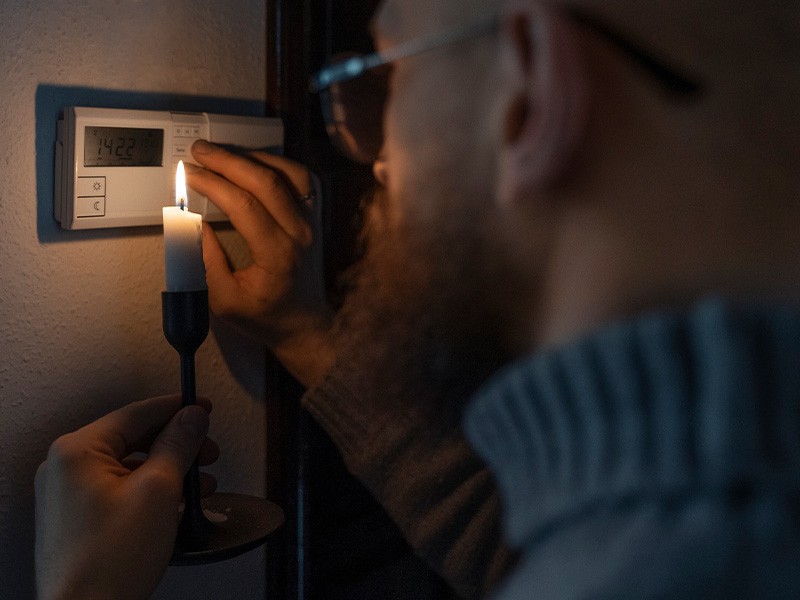
How do I take care of the heating in case of a power outage?
In case of a power outage, especially in winter, heating is crucial. If your furnace is electrically powered, you need backup power to keep it running. In this case, a UPS (uninterruptible power supply, preferably of course from Armac - we recommend the O/850E/PSW or R/2000I/PSW model) with additional battery packs can help to keep the furnace controller and circulation pumps running for a certain period of time. It is important to choose a UPS with a full sine wave function, as only these models can effectively protect the motor and electronic components of the heating system from damage. You can learn more about this in our article.
What supplies should you stock up on?
The basics are a supply of water (store enough drinking water for 1-2 weeks), food (including canned food) and medication. In the event of a prolonged power outage, it is essential to have something that allows you to cook a meal, e.g. a gas stove with a spare cylinder or a mini burner for camping fuel. It is also a good idea to have a small amount of cash and hygiene products. Remember that in an emergency, petrol stations may have problems operating, so it is a good idea to have a minimum amount of fuel in a canister.
What emergency equipment is necessary during a blackout?
During power outages over a large area, devices that help to maintain communication and safety are crucial: a radio (preferably analog), lamps, as well as a power generator or power inverter. When the power goes out, UPS adapters and portable charging banks (so-called portable energy stations) also prove invaluable.
How do UPS adapters work and what role do they play in the household?
A UPS (Uninterruptible Power Supply) adapter is an emergency power supply system that will keep devices such as computers, routers and ovens running in case of a power outage. Armac products are characterized by stable operation and the option of expanding with an additional battery pack, which extends the backup time. Thanks to this, even when power outages last longer, you can still ensure internet connectivity or control over the heating system.
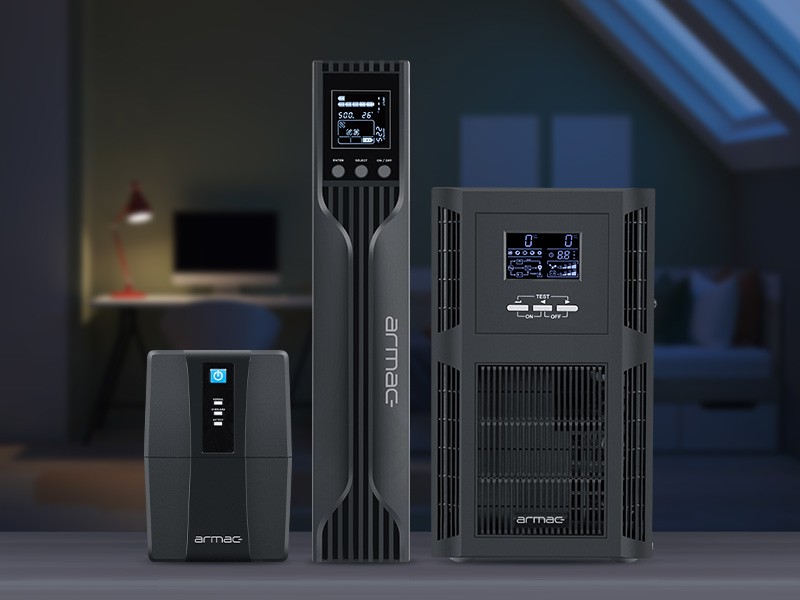
Why is it worth investing in a power generator?
A power generator can supply power to key electrical devices such as a refrigerator or a water pump. Although the generator itself requires electricity in the form of fuel (e.g. gasoline), it is an independent source that provides short-term power supply. In the event of a power outage, the generator stabilizes the situation, especially in larger households.
How to correctly choose a UPS for a power generator?
1. Selection of generator power in relation to UPS
- The power of the generator should be greater than the power of the UPS, but there is not always a strict rule determining the exact power reserve.
- It is recommended that the generator output is at least 1.5 to 2 times the UPS output.
- This is because UPSs, especially online UPSs, draw non-linear current with a high harmonic content, which can cause problems with the stability of the generator.
2. Purity and stability of the generator voltage
- The generator must supply a stable voltage and frequency (e.g. 230V ± 5% and 50 Hz ± 1%).
- It should have an AVR (Automatic Voltage Regulation) to avoid voltage fluctuations that can cause the UPS to switch to battery power.
3. Frequency compatibility
Online UPSs often do not tolerate large frequency fluctuations. Therefore, the generator should have a good frequency regulator (e.g. electronic speed regulator instead of a mechanical one).
4. Checking the output waveform
- Cheaper and poor quality generators can generate voltage with a distorted sinusoid, which can cause problems with the UPS.
- Online UPSs can be very demanding in this respect, so it is worth checking whether the generator supplies a clean sine wave.
5. UPS inrush current
- Online UPSs have a high inrush current, especially when switching from battery mode to mains power. The generator should be able to withstand this load surge.
6. Switching delay and synchronization
- Some UPSs cannot tolerate a sudden switch to the generator if the voltage stabilization time is too long.
- Better generators offer a “soft start” function to avoid sudden voltage changes.
7. Use of an additional filter
- In some cases, it is worth adding an EMI/EMC filter to limit the interference generated by the combustion engine.
Power min.: 1.5–2x greater than UPS
Voltage stability: ±5% (AVR required)
Frequency stability: ±1% (electronic speed controller preferred)
Waveform: Pure sine wave
Response time: Lowest possible voltage stabilization delay
What other electrical devices are useful?
In addition to a UPS and a generator, portable LED lamps, power banks and an additional battery for the car or camping equipment are useful. Any backup power source can be valuable when the power supply is interrupted.
How can you survive a blackout in the long term?
How can you keep informed during a blackout?
To keep track of the situation, you will need a battery-operated or battery-backed radio. Maintaining contact with the outside world (e.g. via cell phone) during a long power outage requires independent energy sources – battery and UPS systems can help here, especially if they are combined with battery packs from Armac-Energy.
How to prepare your home for a long power outage?
If you want to prepare for a blackout, it is a good idea to consider several solutions:
- Heating and hot water: provide an alternative way of heating rooms and preparing meals.
- Emergency power sources: in addition to a UPS, it is also worth having a small generator or access to photovoltaic panels with energy storage.
- Food preservation: a cool place or a cooling unit in case of a long power outage.
- Water supply: crucial for survival, especially in areas where water pumps are also electrically powered.
How to deal with a power outage over a large area?
When a large area is affected by a power outage, the situation becomes more challenging. Power outages affect public transportation, communication and urban infrastructure. It is useful to know where the nearest sources of help are in the area and to maintain contact with neighbors. A joint approach to the problem promotes better resource management.
Is a blackout in a european country a real threat?
What are the potential threats and effects on the power system?
A power outage can result from network overloads, failures caused by external factors, or instability in the power grid. The power grid is sensitive to sudden changes in the load and supply of electricity. Countries with insufficient grid modernization and crisis preparedness often experience power outages. The effects are not only a lack of light, but also the interruption of water supply, the shutdown of server rooms, and the paralysis of medical services.
What are the plans in case of a blackout?
Network operators plan for the worst-case scenarios by developing scenarios and load tests. Various options for integrating renewable energy sources are also being considered to increase independence. Such plans also involve the use of power reserves and cooperation between regions. In the event of a power outage, professional and industrial uninterruptible power adapters (UPS) will maintain the operation of the most important devices in critical infrastructure – in hospitals, data centers, and administrative units.
What preventive measures are being implemented?
To prevent long-term power outages, energy companies are modernizing their installations, supporting energy storage and stabilizing the voltage in the grid. Government programs encourage the development of alternative energy sources such as photovoltaic panels and wind turbines. There is also increasing talk of public education so that every household knows how to prepare for a blackout.
Summary
A power generator, an uninterruptible power supply (we recommend UPS from Armac due to the excellent price-performance ratio and the wide range of models available online) and sufficient supplies are key elements to cope with a long-term power outage. However, the best way to protect yourself is to plan ahead. In the event of a power outage, a UPS will maintain the power supply, allowing not only computers and routers to operate, but also heating-related devices, such as furnace controllers. If you need a longer autonomy, choose a set from Armac - UPS adapters plus additional battery packs.
In the face of blackouts, breakdowns and power outages, it is also important to have a supply of water and food and to be familiar with local emergency plans. Everyone can have an impact on the safety of their own family, and being properly prepared for a crisis will mean that when the power goes out, you will be able to cope without panicking. Well-prepared infrastructure and equipment such as Armac UPS can make the duration of a blackout less troublesome, even if a large area is affected by a power outage due to a failure or disaster.
